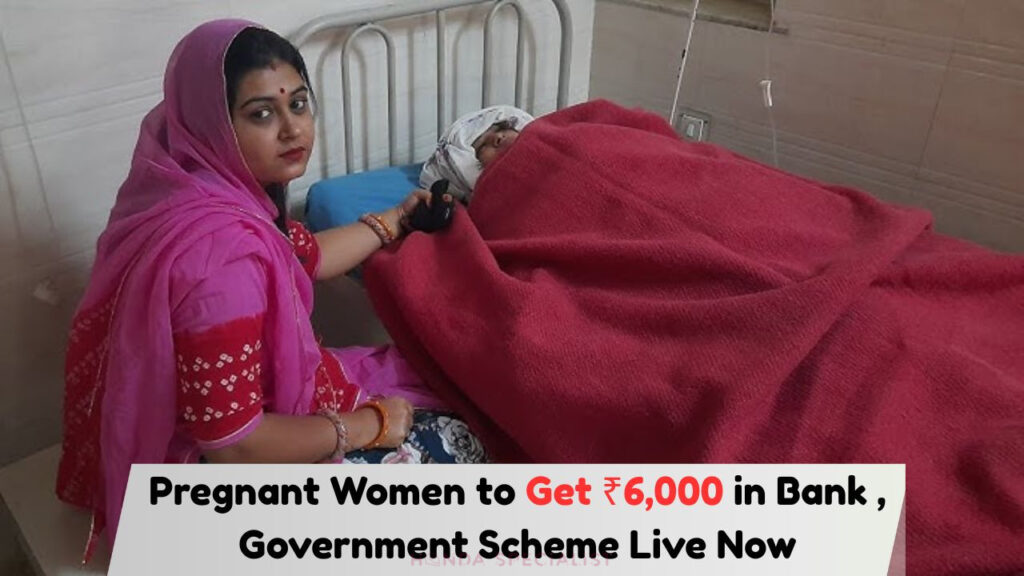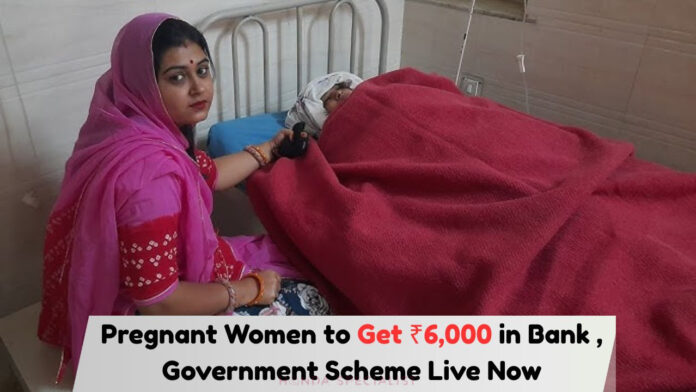
Pregnant Women to Receive ₹6,000 in 3 Phases – Modi Govt’s Direct Transfer Scheme Begins
Modi Government’s ₹6,000 Direct Benefit Scheme for Pregnant Women:
The Indian government has introduced a significant welfare scheme to assist pregnant women nationwide. Under this initiative, the Modi administration will provide a direct financial support of ₹6,000 to expecting mothers. The program is designed to ease financial stress and promote improved healthcare practices during pregnancy.
The scheme, rolled out in three distinct phases, is designed to provide timely financial assistance to pregnant women, helping them manage healthcare-related expenses. This initiative is part of the government’s larger mission to enhance maternal health and lower infant mortality rates across the country. By transferring the funds directly to the beneficiaries, the government aims to eliminate bureaucratic hurdles and ensure the aid reaches those who truly need it.
An Overview of the Modi Govt’s ₹6,000 Direct Benefit Scheme
This scheme is carefully structured to disburse financial aid in three phases, covering both the prenatal and postnatal stages. Its core aim is to offer adequate support for medical check-ups, nutrition, and other vital health services, ultimately ensuring the well-being of both mother and baby.
- Enhance maternal health by providing direct financial support.
- Reduce infant mortality by encouraging regular medical check-ups.
- Promote nutritional awareness among pregnant women.
- Ensure that beneficiaries have access to necessary healthcare services.
Phase-wise Implementation of the Scheme
The scheme is divided into three phases to ensure that the financial aid is distributed effectively throughout the pregnancy and post-delivery period. Each phase targets a specific stage of pregnancy and early motherhood, providing timely assistance to cater to different needs.
Phase Details:
| Phase | Timeline | Objective | Amount |
|---|---|---|---|
| Phase 1 | First trimester | Initial medical check-ups and nutrition | ₹2,000 |
| Phase 2 | Second trimester | Continued healthcare and nutritional support | ₹2,000 |
| Phase 3 | Post-delivery | Postnatal care and infant health | ₹2,000 |
This phased approach ensures that the financial assistance is aligned with the changing needs of the mother and child throughout the crucial stages of pregnancy and early infancy.
Eligibility and Application Process
The eligibility for the ₹6,000 Direct Transfer Scheme is designed to encompass a wide range of beneficiaries, ensuring that the most vulnerable sections of society are covered. The application process is streamlined to facilitate easy access to the scheme’s benefits.
Eligibility Criteria:
- All pregnant women above the age of 18 years.
- Women from economically weaker sections are prioritized.
- Applicants should be registered with local health authorities.
- Must have completed the required medical check-ups.
- Submission of relevant documents for verification.
- Resident of India with valid identification proof.
Application Process and Requirements
The application process is straightforward, ensuring that eligible women can easily avail the benefits without any undue hassle. The government has set up dedicated centers and online portals to facilitate the smooth processing of applications.
Steps to Apply:
- Visit the nearest health center or access the online portal.
- Fill out the application form with accurate details.
- Submit necessary documents, including medical certificates.
- Complete the verification process with local authorities.
Required Documents:
| Document | Purpose |
|---|---|
| Identification proof | Verify identity and residency |
| Income certificate | Confirm economic status |
| Medical reports | Validate health check-ups |
| Bank details | Facilitate direct transfer |
| Photographs | For records and identification |
Impact on Maternal and Infant Health
The impact of this direct transfer scheme is expected to be profound, significantly improving maternal and infant health across the country. By providing financial security and promoting regular health check-ups, the scheme aims to create a healthier environment for both mothers and their newborns.
Expected Outcomes:
- Increased access to healthcare services.
- Reduction in maternal and infant mortality rates.
- Improved nutritional status among pregnant women.
- Empowerment of women through financial independence.
Community and Healthcare Provider Involvement
To ensure the success of the scheme, community and healthcare provider involvement is crucial. Local health workers, NGOs, and community leaders play a vital role in spreading awareness and assisting beneficiaries in accessing the scheme.
Key Roles:
- Local health workers: Assist in registration and medical check-ups.
- NGOs: Facilitate outreach and awareness campaigns.
- Community leaders: Encourage participation and offer support.
Monitoring and Evaluation of the Scheme
Monitoring and evaluation are essential components to ensure the scheme’s effectiveness. The government has set up mechanisms to track the distribution of funds and the health outcomes of beneficiaries, ensuring transparency and accountability.
| Aspect | Method | Frequency |
|---|---|---|
| Fund distribution | Regular audits | Quarterly |
| Health outcomes | Surveys and reports | Bi-annually |
| Beneficiary feedback | Community meetings | Monthly |
| Program adjustments | Policy reviews | Annually |
Challenges and Future Prospects
The challenges and future prospects of the scheme are integral to its ongoing development and success. While the initiative presents a promising step forward, certain challenges need to be addressed to maximize its impact.
- Infrastructure: Improving healthcare infrastructure in rural areas.
- Awareness: Increasing awareness about the scheme among eligible women.
- Technology: Leveraging technology for better service delivery.
Frequently Asked Questions
What is the Modi Govt ₹6,000 Direct Transfer Scheme?
The scheme provides financial assistance of ₹6,000 to pregnant women, distributed in three phases to support healthcare needs.
Who is eligible for the scheme?
Pregnant women above 18 years, especially from economically weaker sections, who are registered with local health authorities.
How can one apply for the scheme?
Applications can be submitted at local health centers or online, with necessary documents for verification.
What are the expected benefits of the scheme?
Improved maternal and infant health, reduced mortality rates, and enhanced nutritional status among beneficiaries.
How does the government ensure transparency in fund distribution?
Through regular audits, beneficiary feedback, and policy reviews.

